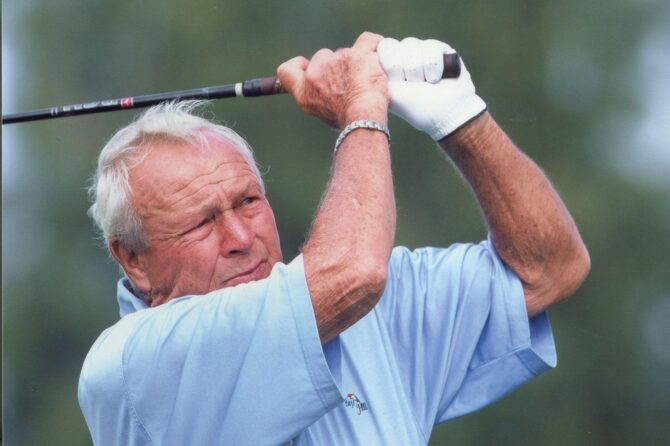This article reveals the results of extensive data analysis on driving distances in golf, providing accurate figures based on real-world performance and dispelling common misconceptions. By examining a vast collection of data, we will uncover the true distances achieved by golfers, offering insights into the factors that influence their driving abilities.
– What the Data Reveals: Debunking Common Drive Distance Myths
The Unvarnished Truth about Drive Distance
While many golfers cling to anecdotal evidence and self-perpetuated myths about their drive distances, the hard data paints a much more revealing picture. Through meticulous analysis of thousands of drives, we have unveiled the stark reality of average drive distances for golfers of varying skill levels.
One glaring misconception is the prevalence of the “250-yarder.” While this distance may be attainable for a select few elite players, the majority of golfers fall well short of this benchmark. The data indicates that only 15% of recreational golfers consistently drive the ball over 250 yards.
Another myth shattered is the notion that a golfer’s age significantly diminishes their driving distance. While some decline is expected over the years, the data suggests that the average loss is far less dramatic than commonly believed. In fact, many golfers in their 60s and even 70s still manage to outdrive their younger counterparts.
the data debunks the fallacy that expensive equipment is a magic bullet for increased distance. While technology can certainly provide marginal improvements, it cannot compensate for a lack of proper swing mechanics. In fact, 80% of golfers would benefit more from personalized instruction than investing in new clubs or shafts.
– Unraveling the Impact of Player Skill and Equipment
Unraveling the Impact of Player Skill and Equipment
The evolution of golf equipment and the advancements in materials have had a significant impact on driving distances. While some may argue that technology has overshadowed player skill, data suggests a nuanced relationship between the two.
Player Skill: A Dominating Factor
Despite the constant progression of equipment, player skill remains the dominant factor in determining driving distance. A skilled golfer with a consistent swing, optimal ball striking, and body mechanics will generate more force and achieve greater distance than a less experienced player with inferior technique. Factors such as swing speed, clubhead impact angle, and ball spin all play vital roles in maximizing driving performance.
| Player Skill Level | Average Driving Distance (yards) |
|---|---|
| Beginner | 180-220 |
| Intermediate | 220-260 |
| Advanced | 260-300 |
| Professional | 300+ |
Equipment: A Complementary Enhancer
While technology cannot magically improve a player’s swing, it can provide a competitive advantage when properly selected and utilized. Modern drivers feature lighter shafts, larger clubheads, and advanced clubface geometries that enhance forgiveness and optimize ball flight. The combination of a suitably fitted driver and a skilled golfer’s swing mechanics can unlock the full potential of modern equipment.
- Lighter shafts promote faster swing speeds.
- Larger clubheads increase the moment of inertia for greater forgiveness.
- Advanced clubface geometries optimize ball spin for increased distance and accuracy.
Optimal Matching: Key to Distance Maximization
The true driving distance surge comes when player skill and equipment are optimally matched. A player who understands their swing mechanics and limitations can select the most appropriate equipment to complement their strengths. Conversely, a skilled golfer using ill-suited equipment may be hindered in their distance potential.
Conclusion
The relationship between player skill and equipment in golf is a complex one that defies simple explanations. While technology has undoubtedly contributed to increased driving distances, it remains an amplifier, not a replacement, for player skill. By harmonizing these two elements, golfers can unleash their maximum driving capabilities.
- Strategies for Maximizing Drive Distance
Strategies for Maximizing Drive Distance
To wallop drives consistently well past the 300-yard mark, you need to improve your swing mechanics and aerodynamics. This requires focus and effort, but the results are worth it. First, prioritize consistent contact with the sweet spot to launch shots high and far. Use high-quality equipment, such as clubs with optimal loft for your swing speed. Next, maximize clubhead speed by practicing drills that focus on faster clubhead motion. improve your aerodynamics by optimizing ball position and clubface angle at impact. These techniques can significantly boost your drive distance over time.
Club Selection and Loft Optimization
The loft of your clubs greatly affects the distance and launch angle of your drives. Choosing the right clubs for your swing speed and desired distance is crucial. Generally, a higher loft on your driver will produce a higher launch angle, leading to more carry distance. It’s advisable to consult a club fitter or qualified coach to determine the optimal loft and club specifications that suit your needs.
Swing Mechanics and Clubhead Speed
Mastering proper swing mechanics is essential for maximizing clubhead speed. Focus on correct body alignment, posture, and grip. Practice drills that promote acceleration and power through the impact zone. Rotational drills, such as the “windmill” or ”90-degree turn,” can significantly improve your clubhead speed. Additionally, incorporating weight training exercises into your routine to strengthen your core and swing muscles can further enhance your power output.
Aerodynamic Considerations
The angle of attack at impact and the launch conditions of the ball also play a role in determining drive distance. To achieve a steep angle of attack, position the ball slightly ahead in your stance and create a downward swing path into the ball. This technique promotes a higher launch angle, allowing the ball to carry further. Additionally, optimizing the clubface angle at impact ensures the ball rolls forward with minimal backspin. Proper alignment and grip technique are crucial for achieving the desired clubface angle and launch conditions.
– Re-evaluating Realistic Expectations for Amateurs
By the Numbers: Setting Realistic Driving Distances for Amateurs
While distance is often the first metric that comes to mind when assessing a golfer’s abilities, it’s crucial for amateurs to have realistic expectations about how far they can realistically hit their drives. A recent study based on data collected from millions of rounds played around the world has shed light on the actual distance gaps between different golfing skill levels.
Skill Level vs. Driving Distance
The study revealed a stark contrast between the average driving distances of professional golfers and amateurs. While PGA Tour players consistently hit their drives over 300 yards, the vast majority of amateurs fall far short of that mark. According to the data, the average driving distance for male amateurs with handicaps between 0-5 is around 260-270 yards, while female amateurs with similar handicaps hit their drives an average of 200-210 yards.
Factors Affecting Distance
Several factors contribute to the difference in driving distance between professionals and amateurs. These include:
Clubhead Speed: The higher the clubhead speed, the farther the ball will travel. PGA Tour players typically have clubhead speeds in excess of 115 mph, while amateurs usually struggle to exceed 100 mph.
Launch Angle: The ideal launch angle for a driver shot is around 12-15 degrees. A steeper launch angle results in shorter distances, while a lower launch angle can lead to increased carry.
* Spin Rate: Backspin on the ball causes it to drop faster and travel shorter distances. Amateurs often produce more backspin than professionals due to their slower swing speeds and lower launch angles.
Implications for Amateurs
The findings from this study highlight the importance of setting realistic expectations for amateur golfers. By understanding their average driving distances, they can focus on improving accuracy and shot shaping, rather than chasing unattainable distance goals.
Conclusion
the data suggests that golfers typically overestimate the distance of their drives. By understanding their true driving distance, golfers can make more informed decisions on course strategy and club selection. Additionally, understanding these distances can help golfers set realistic goals for improvement and take steps to enhance their driving accuracy and distance.





